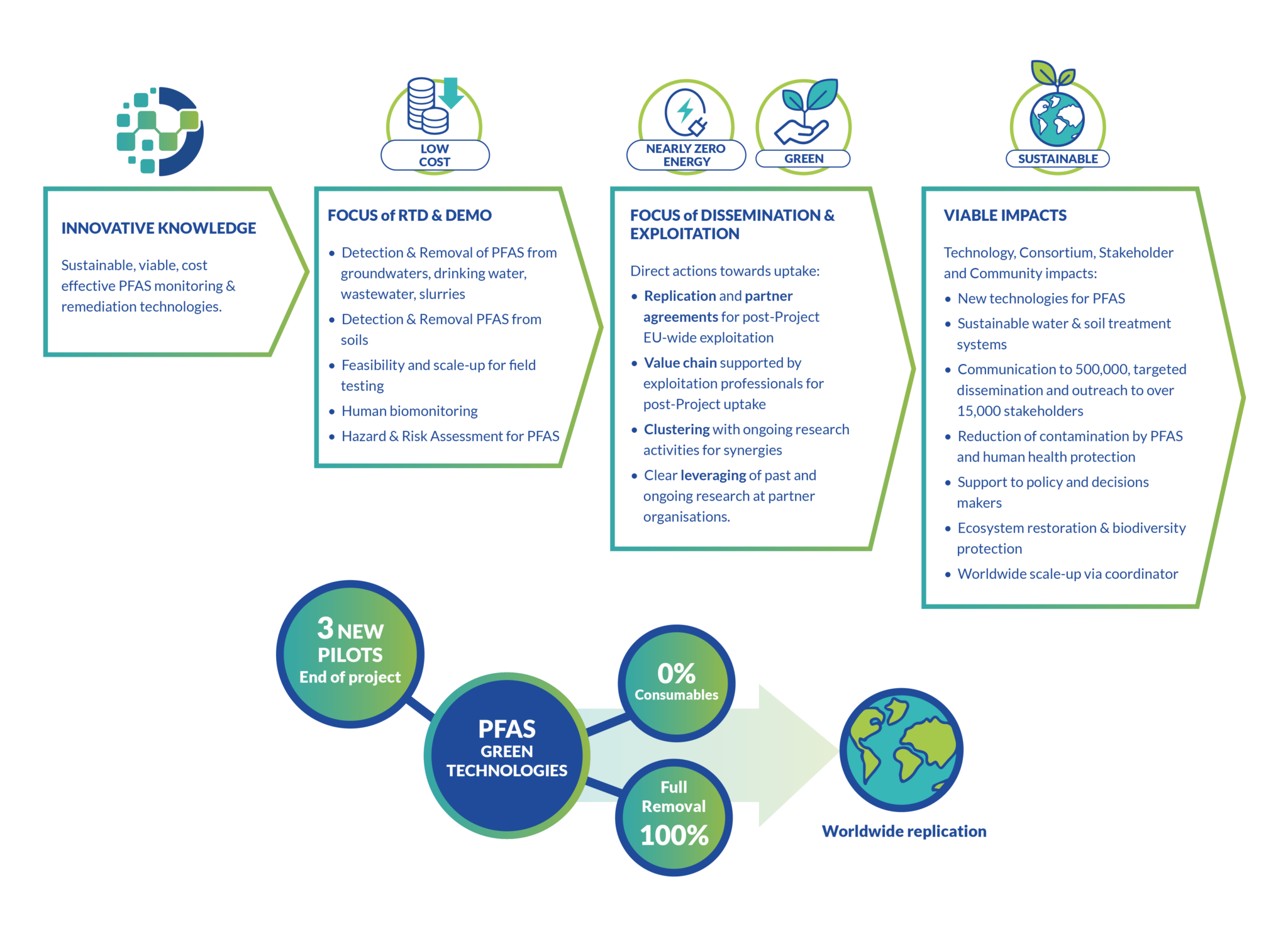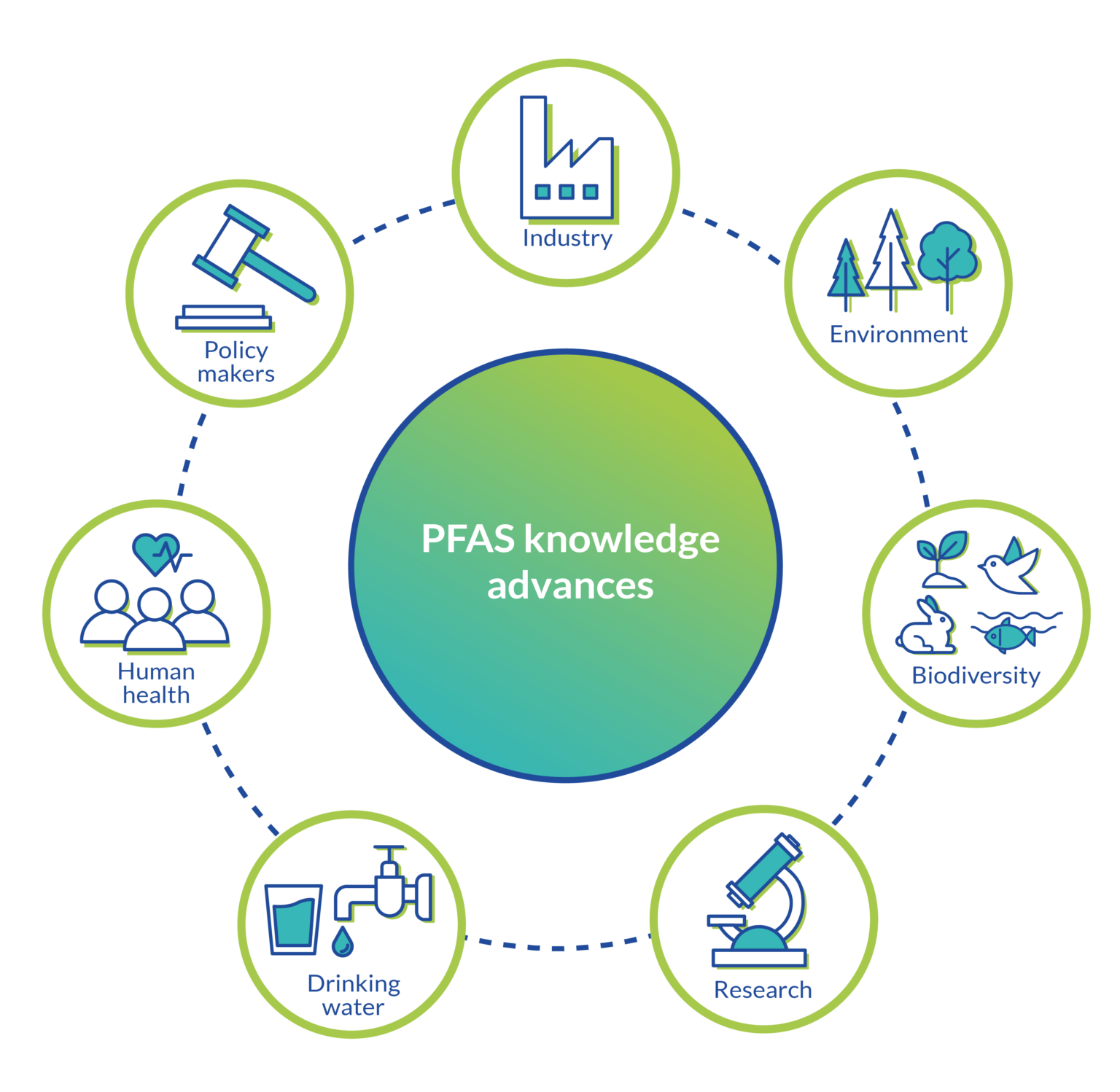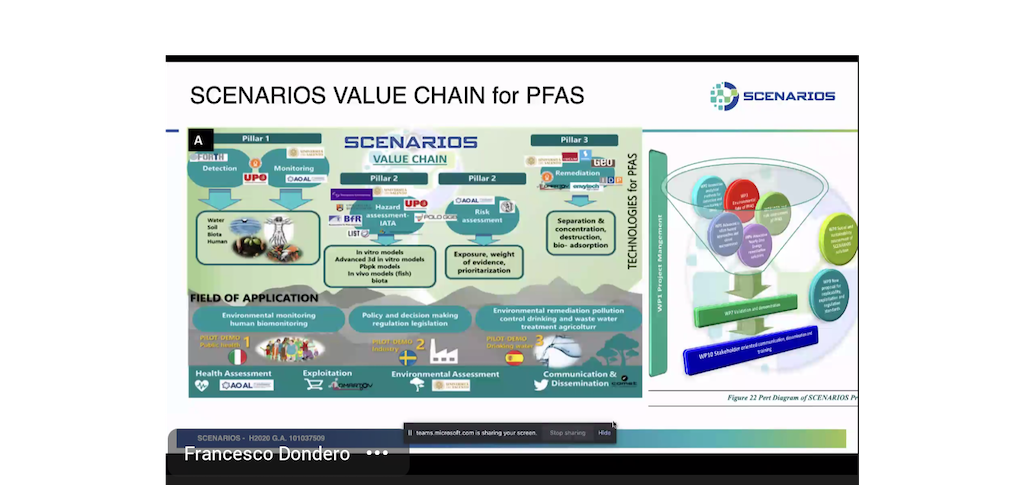Scenarios
Strategies for health protection, pollution Control and Elimination of Next generAtion RefractIve Organic chemicals from the Soil, vadose zone and water
SCENARIOS will achieve TRL’s revolutionary advances in the toxicology, detection and remediation of probably the most objectionable and widespread class of contaminants -PFAS-, with an unprecedented energy balance and virtually no external chemical additives. This will help in making decisions about these substances for environmental safety and human health.

About Scenarios
Specific objectives and technological applications
SCENARIOS is a 4-year H2020 Research and Innovation project (RIA) involving 19 partners from 10 European countries and Israel. The goal is to close the knowledge gap and achieve breakthrough TRL advances in the toxicology, detection and remediation of probably the most objectionable and widespread class of contaminants -PFAS-, with an unprecedented energetic balance and virtually no external chemical additives. . A major effort is underway to develop Integrated Approaches to Testing and Assessment (IATA) of PFAS, including the new generation of congeners, to assist EC and EU countries in decision-making on these substances for environmental safety and human health.
Project's main objectives
Tools & Methods
SCENARIOS is a 4-year H2020 Research and Innovation project (RIA) involving 19 partners from 10 European countries and Israel. The goal is to close the knowledge gap and achieve breakthrough TRL advances in the toxicology, detection and remediation of probably the most objectionable and widespread class of contaminants -PFAS-, with an unprecedented energetic balance and virtually no external chemical additives. SCENARIOS provides a complete set of sustainable solutions to protect human health, the environment, and natural resources from persistent and mobile chemicals, and PFAS. Environmental contaminant exposure significantly contributes to the development of diseases such as cancer, vascular, neurodegenerative illness, inflammatory diseases, allergies, and immune system disorders, which constitute the main health burden in economically developed countries.
Technologies
SCENARIOS will use a crosstoxicological approach that includes the study of human and environmental safety by using molecular systems biology, toxicogenomics and phenotypic screening, supported by bioinformatics and cheminformatics.
Objectives
In order to develop, use and demonstrate such an integrated set of solutions, the following specific objectives have been identified:
- Smart detection of PFAS: Implementing a fast, low-cost and accurate determination of PFAS to allow inexpensive widescale measurement and (bio)monitoring of PFAS congeners in any environmental and biological sample.
- Integrated Approaches to Testing and Assessment (IATA) and Environmental Risk Assessment (ERA) for PFAS: Expanding the ERA framework of non-regulated PFAS and congener mixtures on a long-term scale, implementing a specific class of IATA for PFAS.
- Innovation for PFAS remediation. Development and implementation of an integrated engineering and biological remediation strategy for cleaning PFAS-contaminated environmental compartments, so as to eventually improve their potential ecosystem service (e.g., soil biodiversity for soil fertility).
Impacts
- SCENARIOS aims to devise and demonstrate a comprehensive set of technological solutions to address the detection, (bio)monitoring, long-term toxicity, risk assessment, pollution control and remediation of Per- and polyFluoroAlkyl Substances (PFASs) as a test bed for zero pollution ambition from refractory and mobile organic chemicals.
- SCENARIOS’s approach and technologies will be self-sustainable, (near) net-zero energy and will smoothly integrate in the circular economy concept of EU countries and worldwide.



CONTACT us
- comet@comet.technology
- (+34) 930 23 91 26